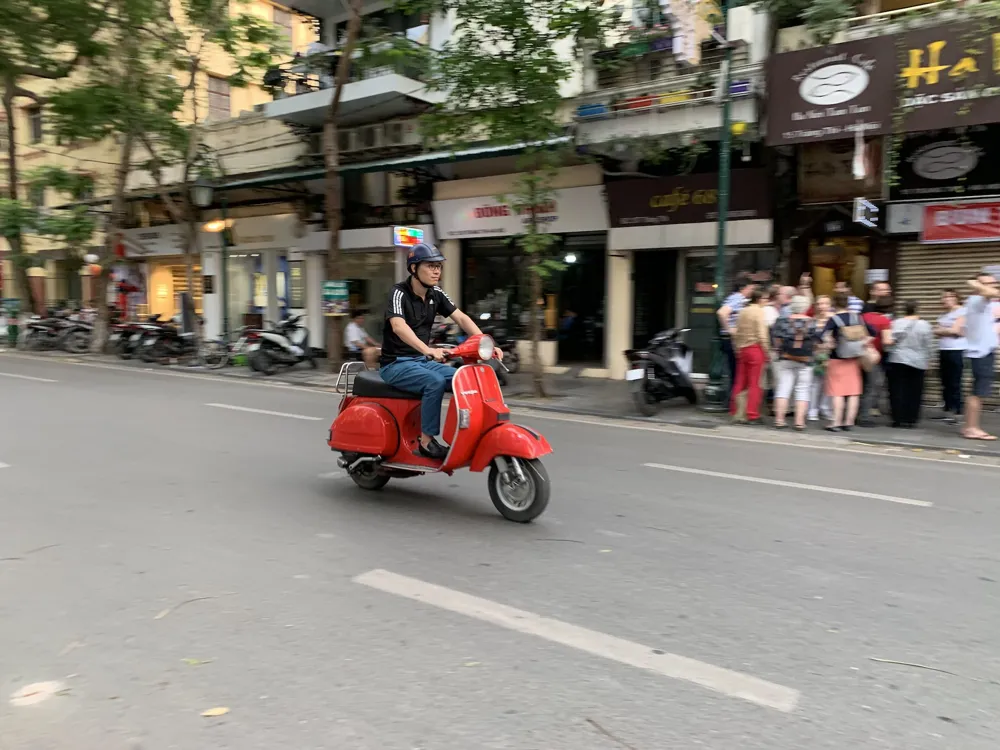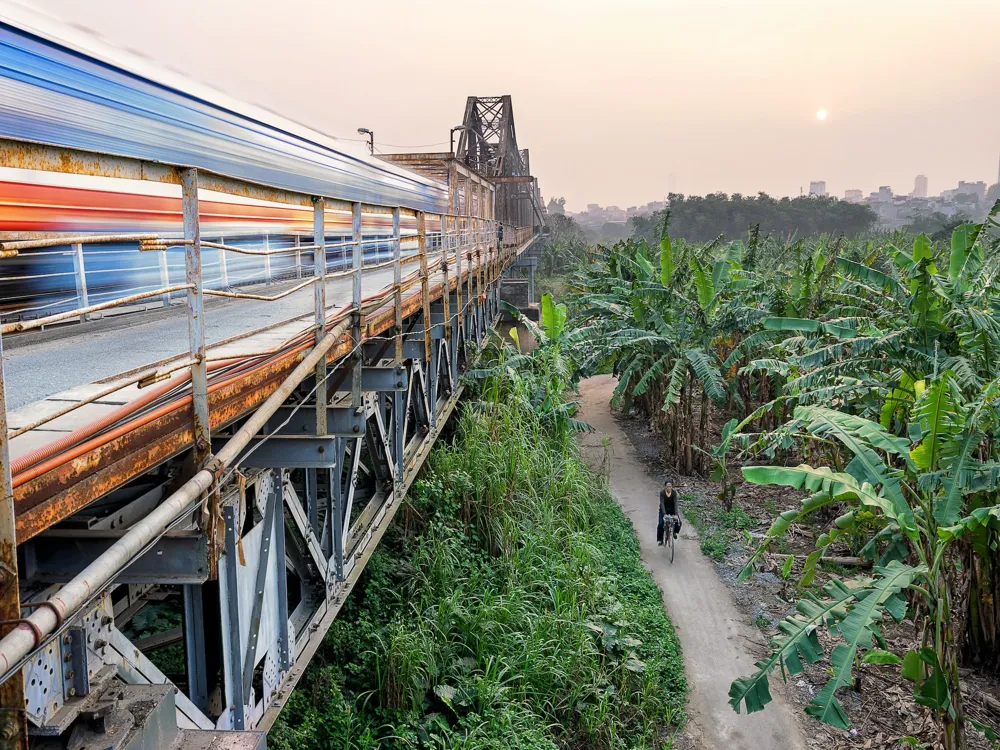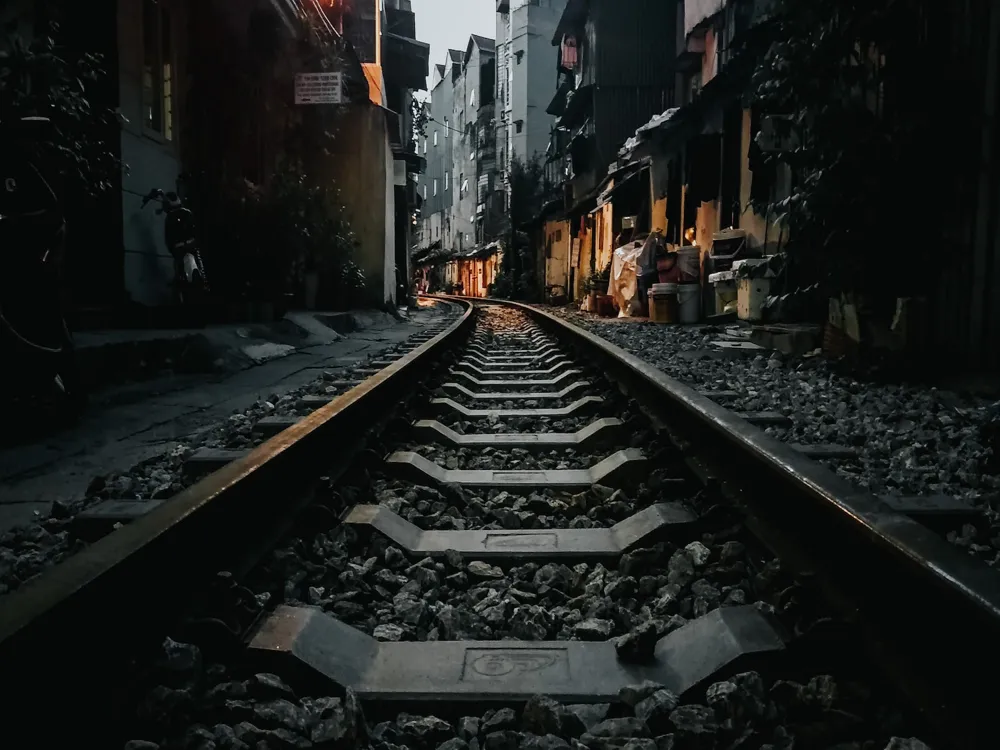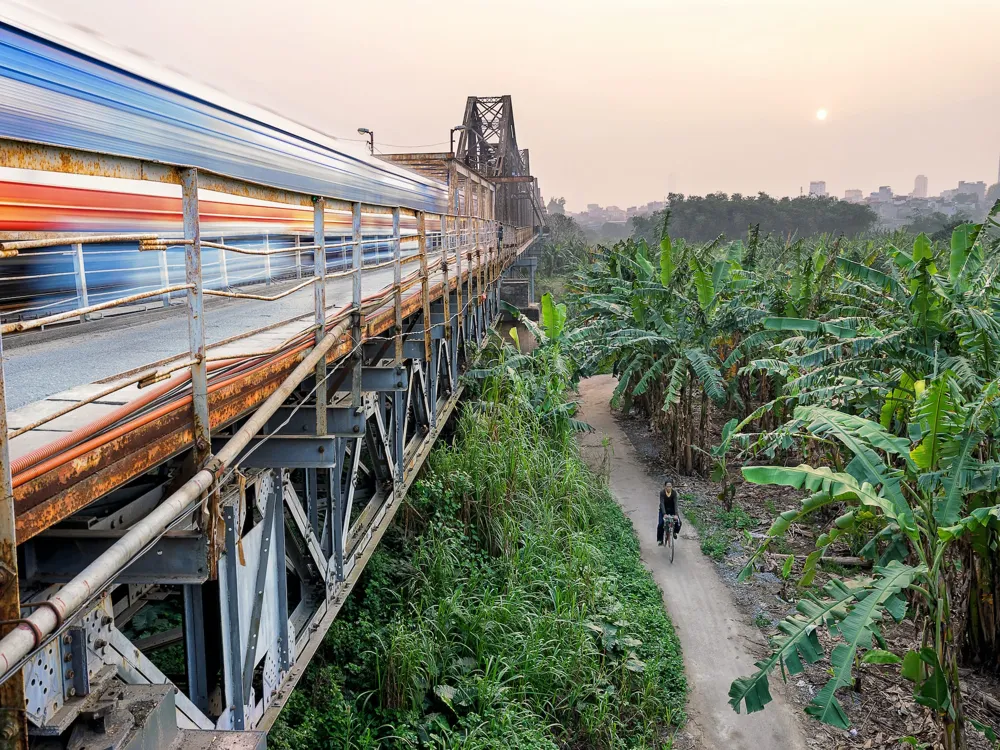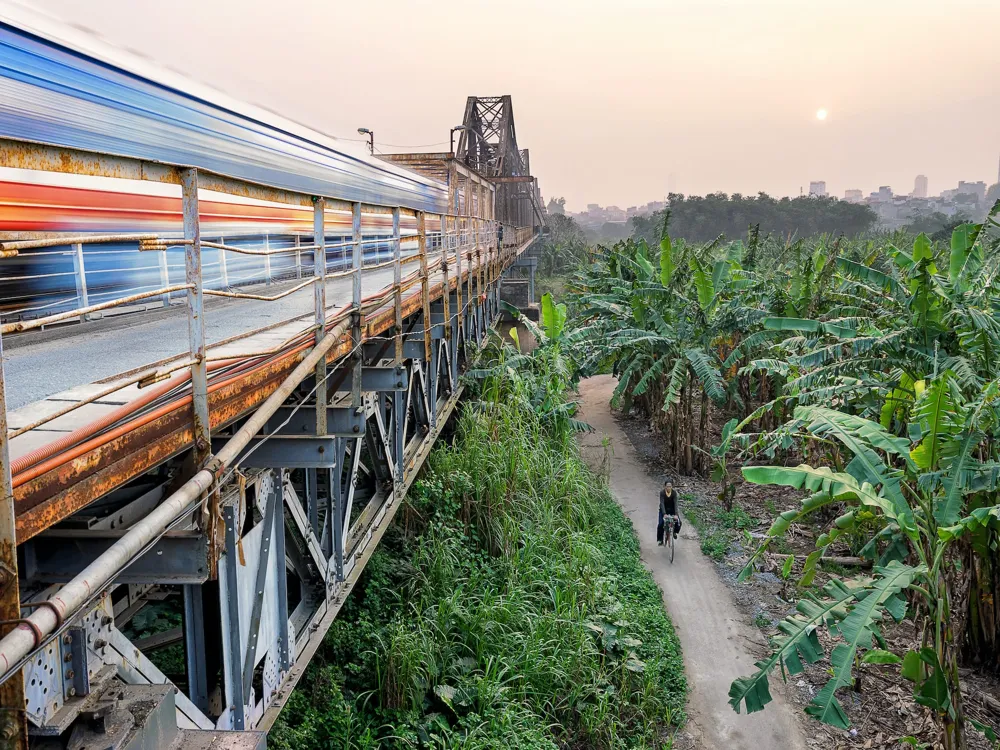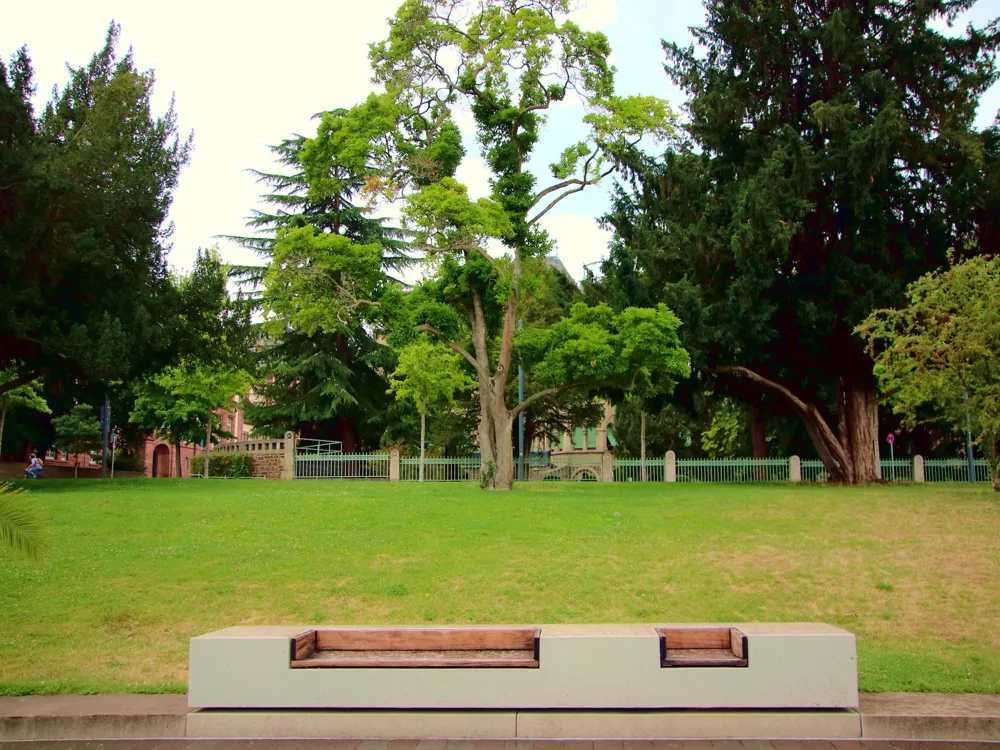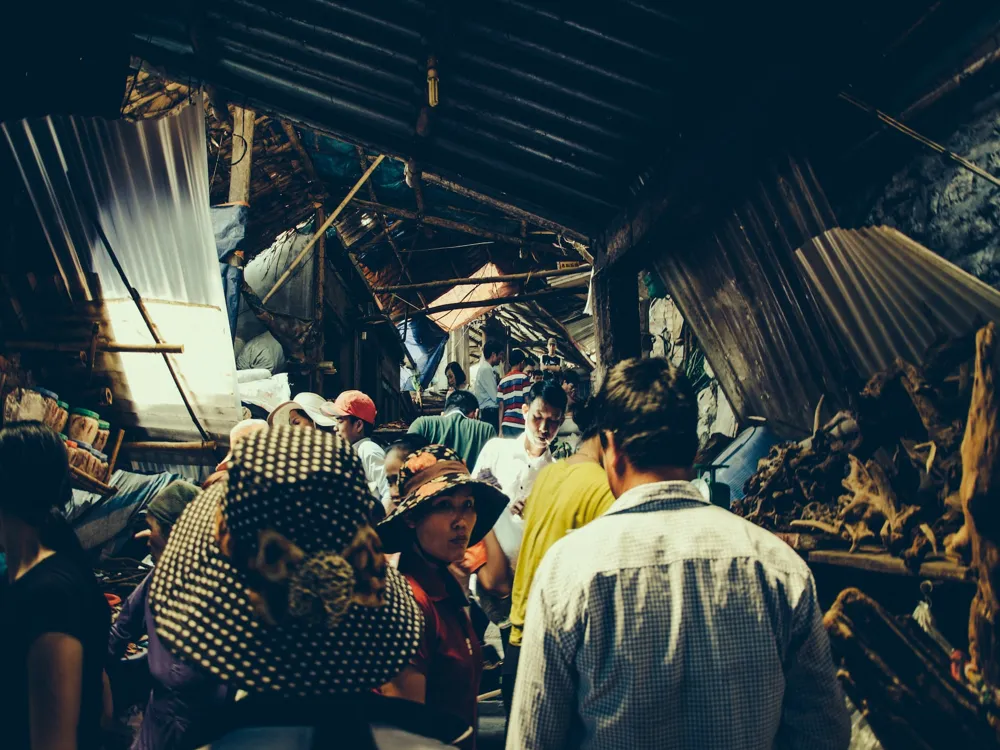Hanoi, the capital city of Vietnam, is a fascinating blend of East and West, combining traditional Vietnamese motifs with French flair. It is a city where the past coexists with the present; ancient temples and colorful markets sit alongside modern developments and bustling streets. Hanoi's rich history is reflected in its architecture, cuisine, and culture, making it a vibrant and dynamic city to explore.
The city's heart is the chaotic Old Quarter, where narrow streets are lined with shops selling everything from traditional Vietnamese silk to exotic foods. The Old Quarter's architecture is a tapestry of Hanoi's history, with French colonial buildings standing alongside ancient Vietnamese structures. This area is also home to the iconic Hoan Kiem Lake, a serene spot in the midst of the city's hustle and bustle, where locals practice Tai Chi in the mornings.
Beyond the Old Quarter, Hanoi offers a range of attractions. The Imperial Citadel of Thang Long, a UNESCO World Heritage Site, is a testament to Hanoi's historical depth. The city is also a culinary paradise, offering a plethora of dishes that are unique to the region, like the world-renowned Pho – a traditional Vietnamese noodle soup.
Hanoi's cultural scene is vibrant and diverse. Traditional Vietnamese music and theater, particularly water puppetry, are integral parts of Hanoi's cultural heritage. Museums like the Vietnam Museum of Ethnology and the Ho Chi Minh Mausoleum offer insightful glimpses into the nation's history and culture.
As a city that has survived wars, colonization, and modernization, Hanoi stands today as a symbol of Vietnamese resilience and pride. Its blend of tradition and modernity, chaos and tranquility, make it an endlessly fascinating city to explore.
The architecture of Hanoi is a fascinating amalgamation of Vietnamese traditions, French colonial influences, and modern elements. This unique blend creates a cityscape that is both diverse and harmonious, reflecting Hanoi's history and cultural identity.
Traditional Vietnamese architecture in Hanoi is best represented by its ancient temples and pagodas, like the Temple of Literature, which dates back to the 11th century. These structures are characterized by intricate carvings, ornate roofs, and a harmonious balance with nature. The use of wood and other natural materials in these buildings highlights the Vietnamese appreciation for nature and craftsmanship.
The French colonial era left a significant imprint on Hanoi's architecture. The French introduced European architectural styles, particularly Art Deco and Neo-Gothic, which can be seen in the Opera House, St. Joseph’s Cathedral, and the historic villas in the Ba Dinh district. These buildings are known for their elegance, symmetry, and the use of pastel colors.
Modern architecture in Hanoi is a testament to Vietnam’s rapid development. Contemporary buildings, such as the Lotte Center, mix glass and steel with traditional Vietnamese design elements. This fusion creates a skyline that is both modern and distinctly Vietnamese.
The city's architecture is not just about individual buildings; it's about how these structures coexist and interact. The narrow tube houses, a unique architectural feature of Hanoi, are a prime example. These tall, narrow houses reflect the adaptation of the city's residents to the spatial constraints of urban living, and they contribute to the distinctive character of Hanoi's streetscapes.
In summary, Hanoi's architecture is a tapestry of different eras and influences. From ancient temples to French colonial buildings and modern skyscrapers, the city's architecture tells the story of its past, present, and future.
Hanoi's culture is rich and multifaceted. It's important to approach it with respect and openness. Learn some basic Vietnamese phrases, understand the local customs and etiquette, especially when visiting temples and religious sites. Dress modestly and be mindful of your behavior to show respect for the local culture.
Hanoi's streets can be overwhelming with their bustling traffic and maze-like layout. It's advisable to use a map or a GPS-enabled device to navigate. For short distances, walking is the best way to explore. For longer distances, taxis are convenient, but make sure to use reputable taxi companies to avoid being overcharged.
Vietnamese cuisine is a highlight of any visit to Hanoi. Street food is a must-try, but it's important to eat at busy stalls to ensure food freshness. Always drink bottled water and be cautious with raw foods. It's also wise to carry some basic medication in case of food-related issues.
Hanoi is a shopper's paradise, especially for traditional goods like silk, handicrafts, and art. Bargaining is a part of the shopping experience in markets. Start by offering half the asking price and negotiate to a middle ground. However, remember to bargain respectfully and understand that this is a livelihood for many vendors.
Hanoi experiences a humid subtropical climate with a hot summer and a cold winter. Pack accordingly, with light clothes for the summer and warmer layers for the winter months. Always carry an umbrella or raincoat, as sudden showers are common, especially during the monsoon season.
Hanoi is accessible by air, road, and rail. The Noi Bai International Airport is well-connected to major cities worldwide. From the airport, you can take a taxi or a bus to the city center. For regional travel, trains and buses are efficient options. Hanoi's central railway station connects to various destinations within Vietnam, while the bus system offers extensive coverage for both short and long-distance travel.
When traveling within the city, taxis, motorbike taxis, and public buses are readily available. For a truly local experience, consider renting a bicycle or a motorbike, but be prepared for the city's dynamic traffic conditions.
Overview of Hanoi
Architecture of Hanoi
Tips When Visiting Hanoi
Understanding the Local Culture
Navigating the City
Food and Safety
Shopping and Bargaining
Weather and What to Wear
How To Reach Hanoi
Statue of Lenin
Hanoi
₹ 15,260 onwards
View hanoi Packages
Weather :
Tags : Monument
Timings : All Day
Entry Fee : No entry fee
Planning a Trip? Ask Your Question
Hanoi Travel Packages
View All Packages For Hanoi
Top Hotel Collections for Hanoi

Private Pool

Luxury Hotels

5-Star Hotels

Pet Friendly
Top Hotels Near Hanoi
Other Top Ranking Places In Hanoi
View All Places To Visit In hanoi
View hanoi Packages
Weather :
Tags : Monument
Timings : All Day
Entry Fee : No entry fee
Planning a Trip? Ask Your Question
Hanoi Travel Packages
View All Packages For Hanoi
Top Hotel Collections for Hanoi

Private Pool

Luxury Hotels

5-Star Hotels

Pet Friendly







